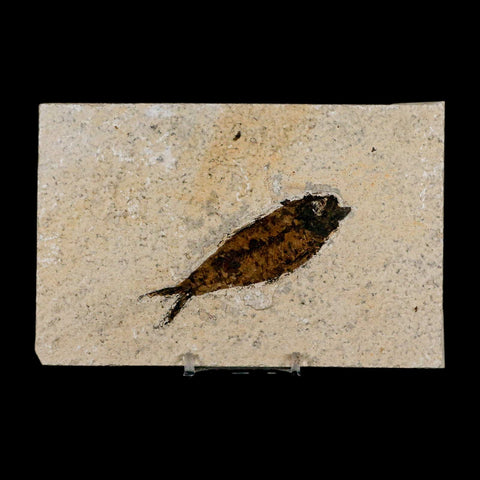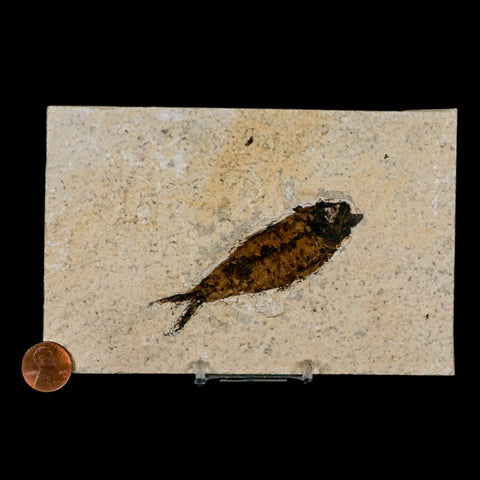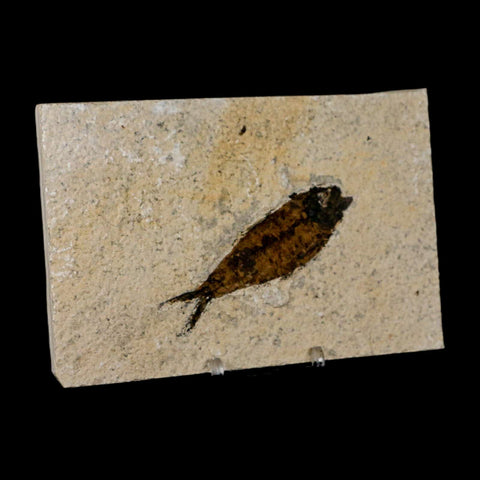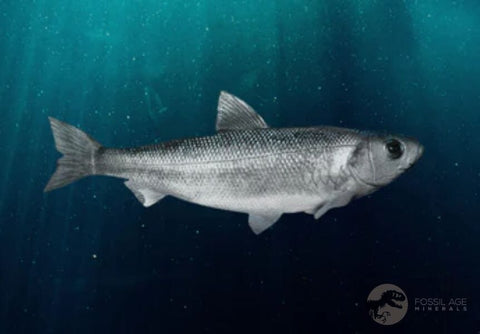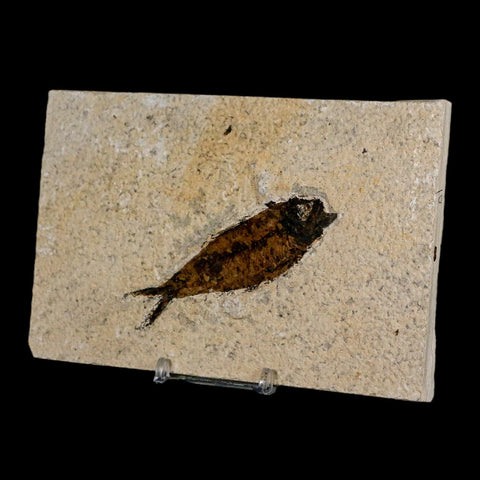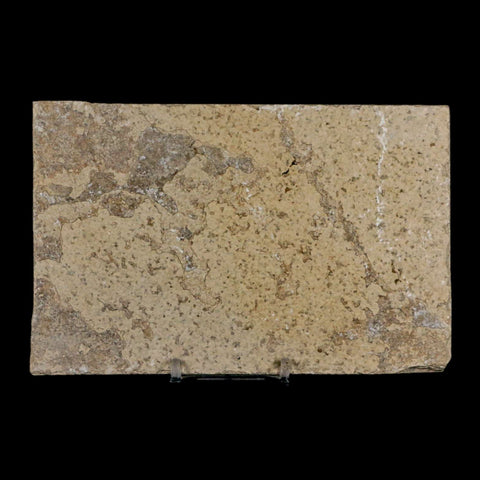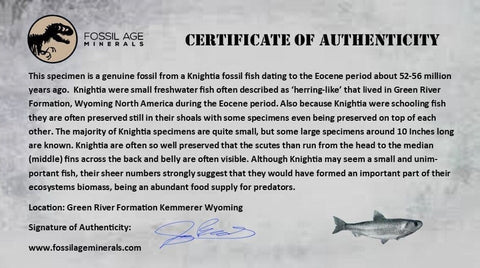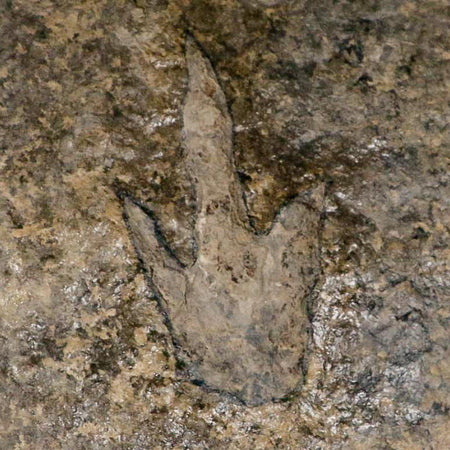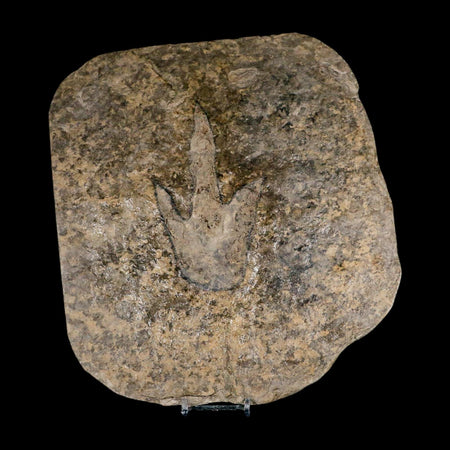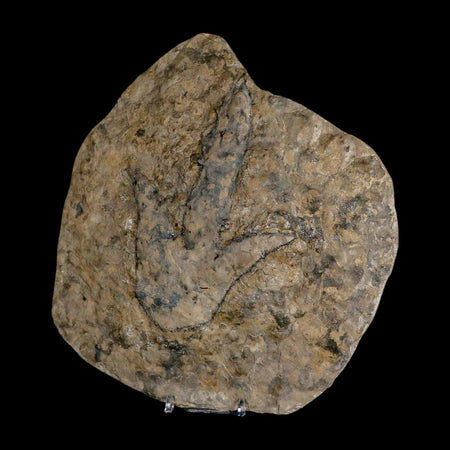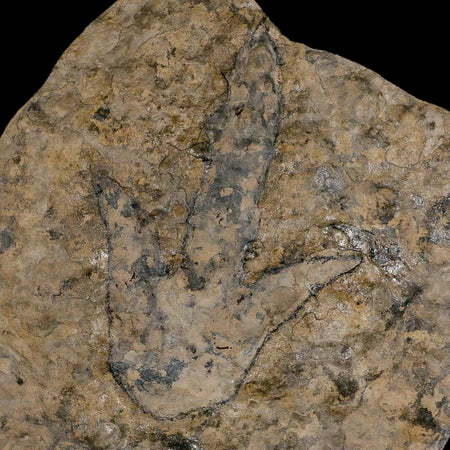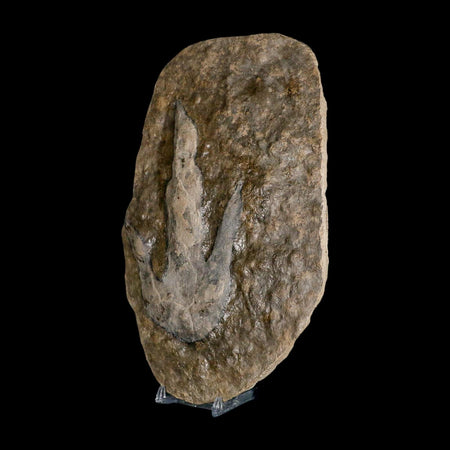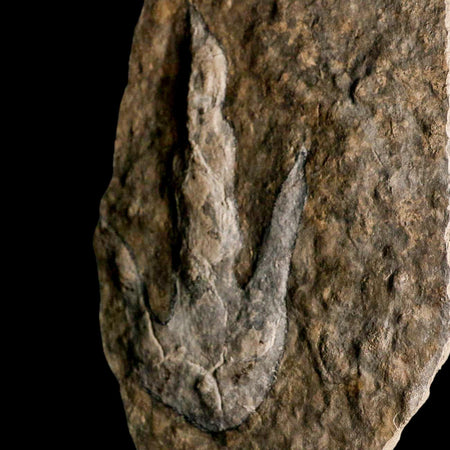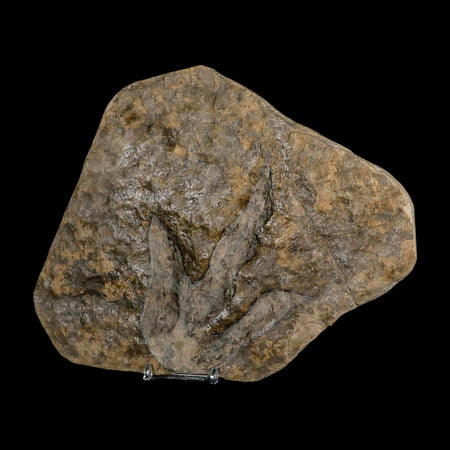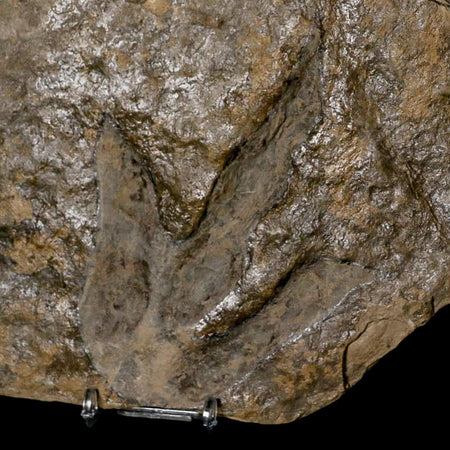3.4" Knightia Eocaena Fossil Fish Green River FM Wyoming Eocene Age COA & Stand
Location: Kemmerer, Wyoming
Weight: 9 Ounces
Dimensions: 6 Inches Long, 3.9 Inches Wide, 0.3 Inches Thick (Plate)
Fish Dimensions: 3.4 Inches Long, 0.9 Inches Wide
Comes with a Certificate of Authenticity.
Comes with a Free Stand.
The item pictured is the one you will receive.
50 million years old, Eocene age
Knightia Eocaena is the most common fish in Fossil Lake and may be the most commonly articulated vertebrate fossil in the world. It is Wyoming's State Fossil. Length: up to 25 cm (10 in).
Around 50 million years ago, Fossil Lake stretched across what is now southwest Wyoming. At its peak, the ancient lake covered nearly 930 square miles. Today, about 500 square miles of its sediments remain preserved. Within the central 230 square miles, the lakebed holds some of the world’s most fossil-rich deposits, along with remarkable geological features such as ancient deltas, beaches, natural springs, and rock formations from both nearshore and deep-water environments.
The unusual chemistry of Fossil Lake prevented decay and scavenging of dead organisms, while millimeter-thick layers of alternating limestone deposits slowly accumulated. The result is laminated limestones that contain the highest concentration of fossil fish in the world. These fish, along with other aquatic organisms and associated geologic features, make Fossil Lake the world's best Paleogene record of the freshwater lake ecosystem.
Since their initial discovery in the 1870s, thousands of exceptionally preserved fossil fish have been unearthed from the region. Encased within the finely layered limestone, scientists have uncovered a remarkably complete prehistoric aquatic ecosystem. Alongside the fossilized fish, remains of cyanobacteria, ancient plants, insects, crustaceans such as shrimp, crawfish, and ostracods, as well as amphibians like frogs and early salamanders, have been found. Fossils of alligators, turtles, birds, and mammals — including the earliest known pantolestid, an otter-like animal — further showcase the diversity of this ancient lake.
The surrounding subtropical terrestrial ecosystem is equally well represented. Rare fossils include an early horse, snakes, lizards, two bat species, additional bird specimens, an apatemyid (tree-dwelling insectivore), and a miacod (primitive carnivore). To complete the picture, over 325 species of fossil leaves, seeds, and flowers provide an extraordinary glimpse into the region’s ancient biodiversity.




